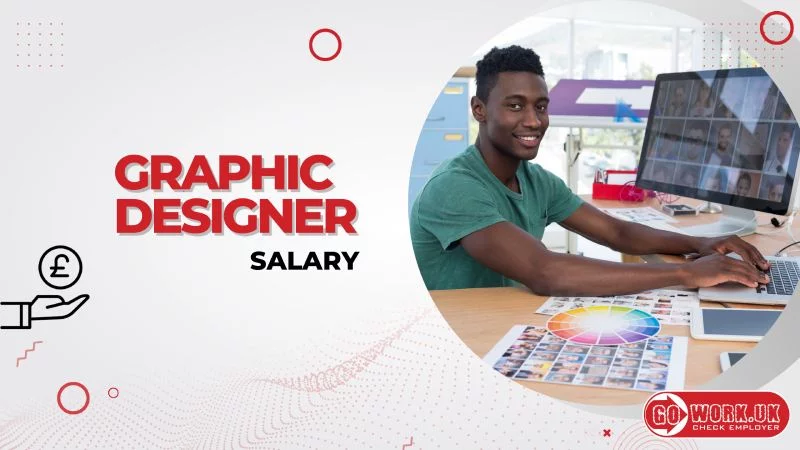Graphic Designer Salary in the UK – Insights

The graphic design industry in the UK is a dynamic and evolving field, attracting creative minds passionate about visual communication. A key question for many entering or already part of this industry is: how much do graphic designers earn?
Table of Contents
Average Wage for Graphic Designer
The average wage for a graphic designer in the UK varies significantly based on several factors including experience, location, and the specific sector within the industry. As of recent data of Payscale, the average salary for a graphic designer ranges from £22,000 to £35,000 per year for mid-level designers. However, this figure can escalate significantly for senior-level designers or those working in specialized areas of graphic design.
Factors Influencing the Salary of Graphic Designer
Several key factors influence the salary of a graphic designer. These include:
- Experience and Skill Level: Generally, the more experience and specialized skills a graphic designer has, the higher the salary. Senior graphic designers or those with niche skills in areas like UX/UI design or animation often command higher wages.
- Geographical Location: Salaries can vary based on where a designer works in the UK. For instance, graphic designers in London and other major cities often earn more than those in rural areas.
- Type of Employment: Freelance graphic designers may have different earning potentials compared to those working in-house or at design agencies. Freelancers can set their rates but lack the stability of a regular income.
Entry-Level to Senior Positions
The graphic design salary for entry-level positions typically starts at around £18,000 to £20,000 per year. As designers gain experience and move into mid-level positions, salaries can increase to the £25,000 to £35,000 range. Senior graphic designers or those in managerial roles can expect salaries in the range of £40,000 to £60,000, and sometimes even higher.

Freelance vs. In-House
Freelance graphic designers often enjoy greater flexibility, allowing them to select projects that align with their interests and expertise. This autonomy can lead to higher earnings, especially for those with a strong portfolio and niche skills, as they can command premium rates. However, this financial advantage comes with the unpredictability of fluctuating income and the absence of traditional employment benefits.
In-house graphic designers typically benefit from a stable salary and additional perks such as pension contributions, paid leave, and professional development opportunities. While their earning potential might not reach the peaks of successful freelancers, in-house designers enjoy greater job security and a consistent income stream. This stability can be particularly appealing for individuals seeking long-term career growth within a company, as well as those who value the collaborative environment and steady workflow that in-house positions offer.
Working Hours of Graphic Designer
Freelancers have the liberty to set their schedules, which can be a double-edged sword. On one hand, this flexibility allows them to work at their most productive hours, balance personal commitments, or pursue other interests. On the other hand, freelancers often find themselves working irregular hours to meet client deadlines or to manage periods of high workload, which can lead to a less predictable work-life balance.
In-house graphic designers typically adhere to a more structured schedule, usually the standard 9-to-5 workday. This regularity provides a predictable routine, which can be beneficial for those who prefer a clear separation between work and personal life. However, it might also mean less flexibility in managing work hours and could involve adhering to strict corporate timelines and schedules.
Each of these working arrangements has its own set of advantages and challenges, and the preference for one over the other often depends on an individual’s personal work style, life circumstances, and career goals.
The Evolution of the Graphic Design Industry
The graphic design industry in the UK has witnessed a significant evolution over the years, adapting to technological advancements and changing market demands. This dynamic field has expanded beyond traditional print media to encompass digital and interactive design, making it more diverse and technologically driven.
As a result, graphic designers today must be adept not only in visual aesthetics but also in various software and digital platforms. This shift has opened up new opportunities and challenges, influencing the demand for skills such as web design, digital marketing, and motion graphics. Designers who continuously update their skills and adapt to these changes often find themselves more marketable and able to command higher salaries. This evolution underscores the importance of lifelong learning and adaptability in the ever-changing landscape of graphic design, ensuring that professionals remain relevant and competitive in this vibrant industry.
Conclusion
The graphic design industry in the UK offers a range of salaries that reflect the diversity and creativity of the field. Whether you’re a budding designer or a seasoned professional, understanding the factors that influence your earning potential is crucial. With the right combination of skills, experience, and location, a career in graphic design can be both financially rewarding and creatively fulfilling.
Do those earnings seem interesting? Visit Gowork.uk and find the most interesting employer for you!




